¿Cuál es la diferencia entre una batería dual y una batería auxiliar?
Diferencia entre batería dual y batería auxiliar explicada
Si alguna vez ha considerado actualizar el sistema de alimentación de su vehículo para acampar, hacer excursiones o trabajar, probablemente haya oído hablar de los términos batería dual y batería auxiliar . Aunque parezcan sinónimos, en realidad se refieren a conceptos diferentes. Comprender la diferencia entre una batería dual y una batería auxiliar puede ayudarle a tomar decisiones más inteligentes al planificar su configuración, especialmente si utiliza accesorios que consumen mucha energía, como refrigeradores, cabrestantes, luces o inversores.
Esta publicación explica todo lo que necesita saber sobre los sistemas de batería dual y batería auxiliar , incluidas sus diferencias clave, beneficios, consideraciones de configuración y cómo elegir la solución adecuada para su vehículo y estilo de vida.
- Comprensión de la función de los sistemas de batería dual y batería auxiliar
- Diferencias clave entre los sistemas de batería dual y de batería auxiliar
- Beneficios de utilizar configuraciones de batería dual y batería auxiliar
- Aplicaciones comunes de los sistemas de batería dual y batería auxiliar
- Componentes que intervienen en los sistemas de batería dual y batería auxiliar
- Consideraciones de instalación para sistemas de batería dual y batería auxiliar
- Tipos de baterías utilizadas en sistemas de batería dual y batería auxiliar
- Opciones de carga para sistemas de batería dual y batería auxiliar
- Mantenimiento y monitoreo de sistemas de batería dual y batería auxiliar
- Solución de problemas comunes en sistemas de batería dual y batería auxiliar
- Consideraciones de costos y presupuesto para sistemas de batería dual y batería auxiliar
- Impacto ambiental de los sistemas de batería dual y batería auxiliar
- El futuro de las tecnologías de batería dual y batería auxiliar
- Consejos para elegir el mejor sistema de batería dual y batería auxiliar
- Por qué es importante la diferencia entre batería dual y batería auxiliar
Comprensión de la función de los sistemas de batería dual y batería auxiliar
¿Qué es un sistema de batería dual?
Un sistema de batería dual consta de dos baterías instaladas en un vehículo: normalmente una batería de arranque y una segunda batería para alimentar los accesorios. El objetivo es aislar la batería de arranque de las cargas auxiliares para evitar descargas accidentales.
¿Qué es una batería auxiliar?
Una batería auxiliar se utiliza específicamente para alimentar electrodomésticos y equipos sin consumir energía de la batería de arranque principal. Forma parte de una configuración de batería dual y batería auxiliar, pero se refiere únicamente a la unidad secundaria.
>>Vea también cómo las baterías de litio afectan la velocidad del carrito de golf
Diferencias clave entre los sistemas de batería dual y de batería auxiliar
Propósito y funcionalidad
Un sistema de batería dual se refiere a la arquitectura general del sistema.
Una batería auxiliar es un componente dentro de ese sistema con un propósito definido: hacer funcionar accesorios no esenciales.
Comprender esta distinción es fundamental a la hora de seleccionar o mantener una configuración de batería dual y batería auxiliar .
Distribución de energía
En una configuración dual, la energía se distribuye inteligentemente entre las baterías de arranque y auxiliar mediante aisladores, cargadores CC-CC o sistemas de gestión de baterías (BMS). La batería auxiliar alimenta sus dispositivos de forma independiente.
Beneficios de utilizar configuraciones de batería dual y batería auxiliar
Capacidad extendida fuera de la red
Con un sistema de batería auxiliar y batería dual instalado correctamente, puede hacer funcionar refrigeradores, iluminación u otros dispositivos electrónicos durante períodos prolongados sin agotar la batería de arranque.
Seguridad y funcionalidad mejoradas del vehículo
Al aislar las cargas accesorias de la batería principal, un sistema de batería dual y batería auxiliar garantiza que su vehículo siempre tenga suficiente energía para arrancar.
Mayor eficiencia de carga
Las configuraciones modernas de batería dual a menudo incluyen carga de alternador inteligente o integración solar, lo que permite que ambas baterías se carguen de manera eficiente durante el viaje o el tiempo de inactividad.
Aplicaciones comunes de los sistemas de batería dual y batería auxiliar
Camping y viajes por tierra
Los sistemas de doble batería son populares entre los aventureros al aire libre. La batería auxiliar proporciona energía constante a refrigeradores, ventiladores, calentadores e iluminación.
Vehículos comerciales y de trabajo
Los vehículos utilizados por comerciantes o profesionales de campo a menudo cuentan con sistemas de batería dual y batería auxiliar para hacer funcionar herramientas, radios o iluminación durante el uso prolongado en el lugar de trabajo.
Sistemas marinos y de vehículos recreativos
Los barcos y vehículos recreativos con frecuencia utilizan sistemas similares para separar la energía de la casa de las funciones del motor.
Componentes que intervienen en los sistemas de batería dual y batería auxiliar
Aisladores
Un aislador mantiene la batería dual y la batería auxiliar separadas cuando el motor está apagado, pero permite la carga cuando el motor funciona.
Cargadores CC-CC
Estos dispositivos inteligentes cargan la batería auxiliar de manera más eficiente y manejan diferentes químicas (AGM, litio, etc.).
Sistemas de gestión de baterías (BMS)
Un BMS protege el sistema de batería dual y de batería auxiliar contra sobrecargas, descargas excesivas y temperaturas extremas.
Consideraciones de instalación para sistemas de batería dual y batería auxiliar
Espacio y montaje
Encontrar espacio en el vehículo para una batería auxiliar y su cableado puede ser complicado. Las configuraciones bajo el capó son comunes en las camionetas, mientras que las áreas de carga se utilizan en SUV o furgonetas.
Cableado y seguridad
El cableado del calibre adecuado y la ubicación de los fusibles son esenciales para administrar de manera segura la energía entre el sistema de batería dual y el sistema de batería auxiliar .
Ventilación y refrigeración
Las baterías auxiliares de plomo-ácido pueden liberar hidrógeno, lo que requiere una ventilación adecuada. Las opciones de litio ofrecen soluciones compactas y selladas.
Tipos de baterías utilizadas en sistemas de batería dual y batería auxiliar
AGM (estera de vidrio absorbente)
Se utiliza comúnmente en configuraciones duales debido a su robustez y naturaleza a prueba de derrames.
Gel
Las baterías de gel son seguras pero pueden ser sensibles a la sobrecarga.
Fosfato de hierro y litio (LiFePO4)
Estas baterías son livianas, duraderas e ideales para sistemas de batería auxiliar y batería dual de alto rendimiento.
Opciones de carga para sistemas de batería dual y batería auxiliar
Carga del alternador
Los alternadores estándar pueden cargar ambas baterías cuando el vehículo está en marcha, pero es posible que no carguen completamente las baterías auxiliares de litio.
Carga solar
Los paneles solares, un complemento popular para usuarios que no están conectados a la red eléctrica, se pueden utilizar para mantener la batería auxiliar sin hacer funcionar el motor.
Carga de CA
Si su sistema admite energía eléctrica de costa o un generador, un cargador de CA a CC puede recargar la batería dual y la batería auxiliar durante la noche.
Mantenimiento y monitoreo de sistemas de batería dual y batería auxiliar
Comprobación de los niveles de voltaje y carga
Un voltímetro o pantalla digital le permite monitorear el estado de la batería auxiliar para evitar una descarga profunda.
Ciclos de carga de ecualización
Algunos sistemas requieren ecualización periódica, especialmente con baterías inundadas o AGM.
Reemplazo de componentes desgastados
Como todos los sistemas, los cables, terminales y baterías en una configuración de batería dual y batería auxiliar se degradan con el tiempo y deben revisarse periódicamente.
Solución de problemas comunes en sistemas de batería dual y batería auxiliar
El sistema no se carga correctamente
Revise los aisladores, fusibles y conexiones de cables. Asegúrese de que su cargador CC-CC sea adecuado para la composición química de su batería.
Descarga rápida de la batería auxiliar
Verifique que las cargas parásitas se minimicen y que el tamaño de la batería se adapte a sus necesidades energéticas.
El motor no arranca
Si ambas baterías están agotadas, es posible que el aislador no funcione correctamente. Confirme siempre que el sistema de batería dual y la batería auxiliar cuenten con dispositivos de seguridad.
Consideraciones de costos y presupuesto para sistemas de batería dual y batería auxiliar
Sistemas de nivel básico vs. sistemas premium
Un sistema básico con una batería auxiliar AGM puede costar entre $300 y $500, mientras que las configuraciones de litio de alta gama con cargadores CC-CC y entrada solar pueden superar los $1500.
Valor a lo largo del tiempo
Invertir en un sistema de batería auxiliar y batería dual de calidad brinda confiabilidad y reduce el riesgo de problemas relacionados con la batería en el futuro.
Impacto ambiental de los sistemas de batería dual y batería auxiliar
Reciclaje y Sostenibilidad
Muchos componentes, incluidas las baterías de plomo-ácido y de litio, son reciclables. Asegúrese de que el plan de eliminación de su sistema de batería dual y auxiliar cumpla con la normativa local.
La integración solar reduce las emisiones
La energía solar puede complementar o incluso reemplazar la carga del alternador, lo que es especialmente útil en configuraciones con conciencia ecológica.
El futuro de las tecnologías de batería dual y batería auxiliar
Integración de sistemas inteligentes
Los futuros sistemas de batería dual y batería auxiliar interactuarán cada vez más con aplicaciones de teléfonos inteligentes, GPS y diagnósticos remotos.
Mejor química de la batería
Los avances en la tecnología de baterías de litio prometen soluciones más livianas y duraderas para uso auxiliar.
>>Vea también ¿13.2 voltios es un voltaje de batería saludable?
Consejos para elegir el mejor sistema de batería dual y batería auxiliar
Sistema de adaptación a su perfil de potencia
Calcule el uso diario de amperios-hora y seleccione un tamaño de batería y un método de carga que satisfaga sus necesidades.
Opte por diseños modulares
Los sistemas escalables le permiten ampliar su configuración de batería dual y batería auxiliar a medida que crecen sus necesidades.
Busque la instalación de un experto
Un cableado inadecuado o una mala elección de componentes pueden convertir una instalación potente en un riesgo de seguridad. Considere la ayuda de un profesional para construcciones complejas.
Por qué es importante la diferencia entre batería dual y batería auxiliar
Ahora que comprende la diferencia entre la batería dual y la batería auxiliar , queda claro que cada una desempeña una función específica e importante en el sistema de alimentación de su vehículo. El sistema dual se centra en la arquitectura y la gestión, mientras que la batería auxiliar proporciona energía constante y aislada a sus accesorios.
Elegir la configuración correcta puede mejorar la eficiencia, aumentar la seguridad y hacer que sus aventuras o experiencias en el lugar de trabajo sean mucho más confiables. Ya sea que acampe durante el fin de semana, explore por tierra o sea un profesional que depende de la energía móvil, su configuración de batería dual y batería auxiliar es la base de la independencia energética en movimiento.

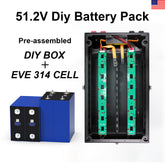

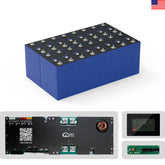

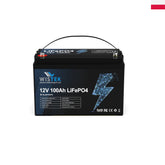


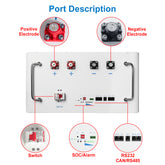




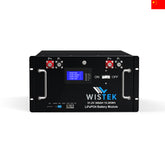
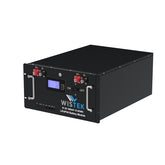
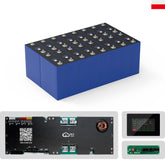








Leave a comment
All blog comments are checked prior to publishing